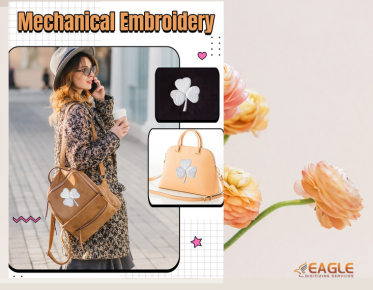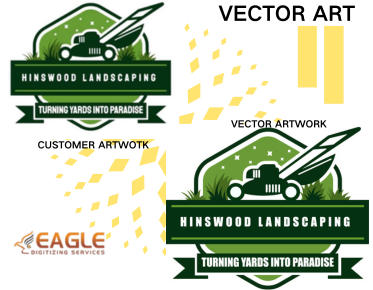How to Convert an Image to an Embroidery File
Converting an image to an embroidery file is a fascinating process that combines art with technology. This transformation allows you to take a digital image and turn it into a format that can be read by embroidery machines, enabling the creation of beautiful embroidered designs. Whether you're a hobbyist or a professional, understanding this process can open up a world of creative possibilities. In this guide, we'll explore the steps involved in converting an image to an embroidery file, the tools you'll need, and some tips to ensure the best results. For those looking to delve deeper into the world of embroidery, embroidery digitizing is a key skill to master.
Understanding Embroidery Files
Embroidery files are specialized digital files that contain instructions for embroidery machines. These files dictate how the machine should stitch the design, including the stitch type, direction, and color changes. Common embroidery file formats include PES, DST, and EXP, each compatible with different brands of embroidery machines. Understanding these formats is crucial for anyone looking to convert images into embroidery files.
Choosing the Right Software
The first step in converting an image to an embroidery file is selecting the right software. There are numerous embroidery digitizing software options available, each with its own features and capabilities. Some popular choices include Wilcom, Hatch, and Brother's PE-Design. These programs allow you to import an image and convert it into a stitch file. When choosing software, consider factors such as ease of use, compatibility with your embroidery machine, and the level of control it offers over the digitizing process.
Preparing Your Image
Before you can convert an image to an embroidery file, it's important to prepare the image properly. High-quality images with clear lines and distinct colors work best for digitizing. You may need to edit the image to simplify complex designs, adjust colors, or enhance contrast. This preparation ensures that the final embroidery design is both accurate and aesthetically pleasing.
Digitizing the Image
Once your image is ready, the next step is digitizing it. This involves using your chosen software to map out the stitches that will recreate the image in thread. The software will allow you to set parameters such as stitch type, density, and direction. This step requires a good understanding of embroidery techniques and the capabilities of your machine. For those new to digitizing, many software programs offer tutorials and guides to help you get started.
Testing and Refining the Design
After digitizing the image, it's important to test the design by stitching it out on a sample fabric. This allows you to see how the design translates from the screen to the real world and make any necessary adjustments. You may need to tweak stitch density, adjust colors, or refine details to achieve the desired result. This testing phase is crucial for ensuring the quality and accuracy of the final embroidery.
Finalizing the Embroidery File
Once you're satisfied with the test stitch, you can finalize the embroidery file. Save the file in the appropriate format for your embroidery machine, and it's ready to use. At this point, you can transfer the file to your machine and start creating your embroidered masterpiece.
Tips for Successful Embroidery Digitizing
Here are some tips to help you succeed in converting images to embroidery files:
- Start with simple designs and gradually work your way up to more complex images.
- Pay attention to the limitations of your embroidery machine, such as hoop size and stitch capabilities.
- Experiment with different stitch types and densities to achieve the best results.
- Keep learning and exploring new techniques to enhance your digitizing skills.
Exploring Advanced Techniques
As you become more comfortable with the basics of embroidery digitizing, you can explore advanced techniques such as 3D puff embroidery, applique, and using specialty threads. These techniques can add depth and texture to your designs, making them stand out even more. For those interested in expanding their skills, embroidery digitizing software offers a range of tools and features to experiment with.
Conclusion
Converting an image to an embroidery file is a rewarding process that combines creativity with technical skill. By understanding the steps involved and utilizing the right tools, you can create stunning embroidered designs from digital images. As you continue to practice and refine your skills, you'll discover new possibilities and techniques to enhance your embroidery projects. For those seeking professional assistance, Eagle Digitizing excels in providing professional embroidery digitizing services, ensuring every design is crafted with unmatched precision.



